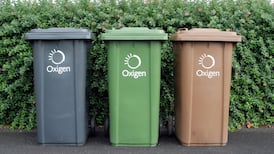The ability to deploy grid-scale battery storage and install “private wires” where companies can directly connect to generators of renewables has been enhanced under a new framework agreed by the Government.
This will enable acceleration in delivery of large-scale renewables “and ensure Ireland gets optimum benefit”, said Minister for Energy Eamon Ryan.
Two memos setting out future plans for development of electricity storage, which will allow excess renewables to be stored and used when needed, and for private wires have been approved by Cabinet.
The latter will allow community energy groups, private individuals or other energy users to run their own electricity cables to transfer electricity. “These two developments are essential building blocks of a new renewable energy system, which by its nature is variable and accessible to all, from individual householders to community energy projects to large energy users,” Mr Ryan said.
READ MORE
Electricity storage systems can “bank” excess energy from renewables when they are plentiful so that it can utilised on the grid instead of fossil fuel. This might be when demand is high or when capacity from wind or solar is low – for instance, during a low pressure period in winter.
Ireland has about 800MW of storage capacity, while the policy framework recommends procuring additional storage immediately.
Ultimately, this will provide cheaper, green electricity to the consumer. It says “it will ensure Ireland’s grid can exploit the opportunities provided by the fast pace of our renewable generation programme and facilitate growth of Ireland’s industrial sectors”.
ESRI analysis suggests early delivery of onshore renewables this decade will drive down wholesale electricity prices by up to 10 per cent.
Private wires refers to private individuals or undertakings running their own electricity cables to transfer electricity. In most instances it will involve crossing land or property the cable owner or operator does not own, whether this is privately or publicly owned. Currently, transfer of electricity from external generation to a demand site – such as houses or factories – only takes place on the State-owned national electricity grid.
The connection between end users and renewable sources can be put in individuals’ control, allowing community energy groups, for example, to bring energy directly to demand users, or allowing larger energy users like a data centre or a pharmaceutical company to get energy directly from a local solar farm, that is not part of its campus.
The vast majority of energy needs will continue to be supplied through the national grid. Private wires will complement national policies and ongoing grid development through the Commission for Regulation of Utilities and grid systems operators such as ESB Networks or EirGrid.
The framework follows public consultation on opportunities from both onshore and offshore perspectives to include green hydrogen production; linking local generation with demand far away, to potential uses such as private networks akin to small private electricity grids.
- Sign up for Business push alerts and have the best news, analysis and comment delivered directly to your phone
- Join The Irish Times on WhatsApp and stay up to date
- Our Inside Business podcast is published weekly – Find the latest episode here















